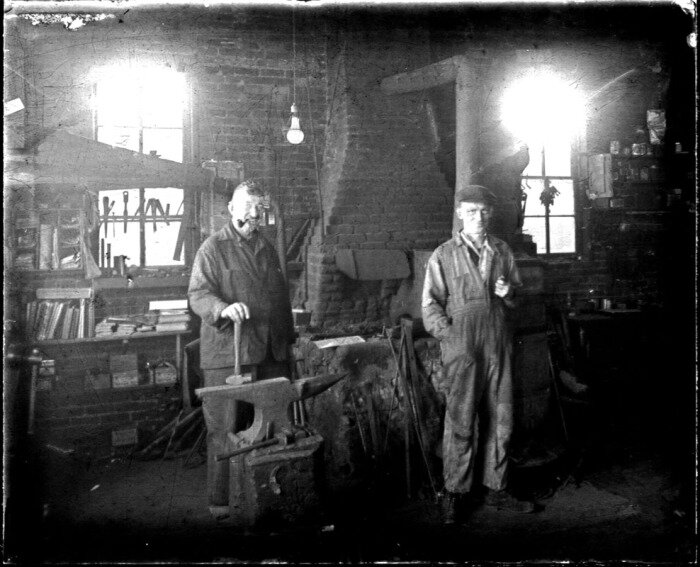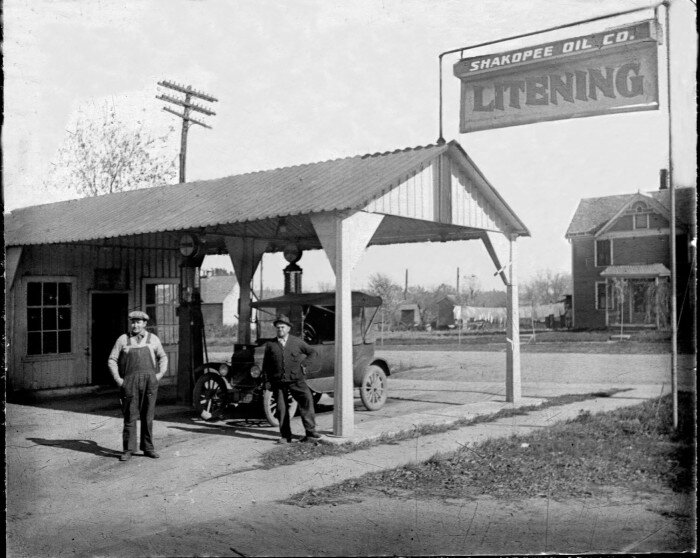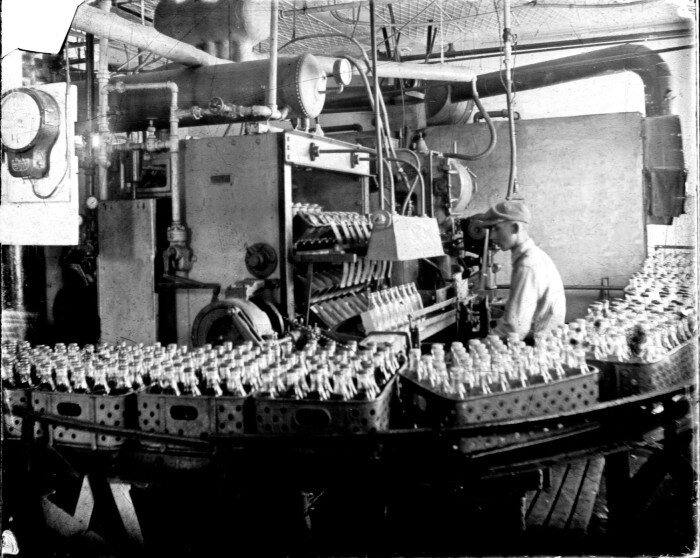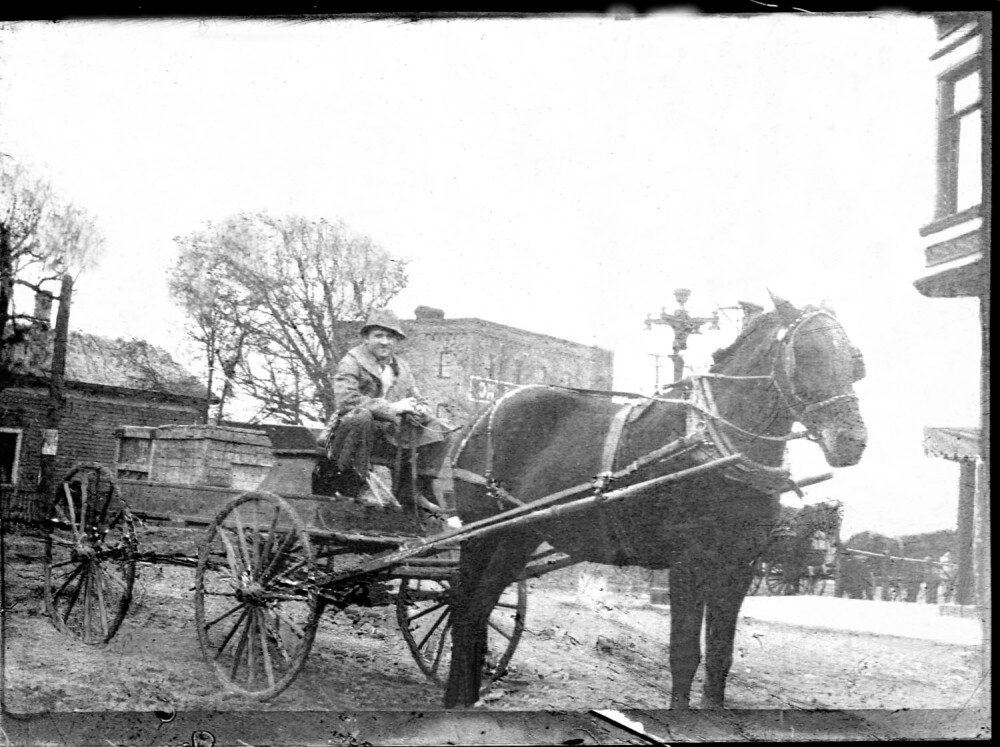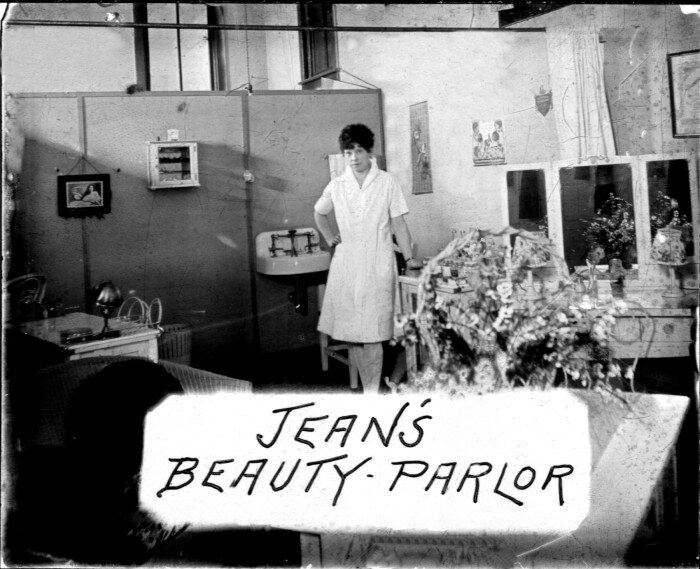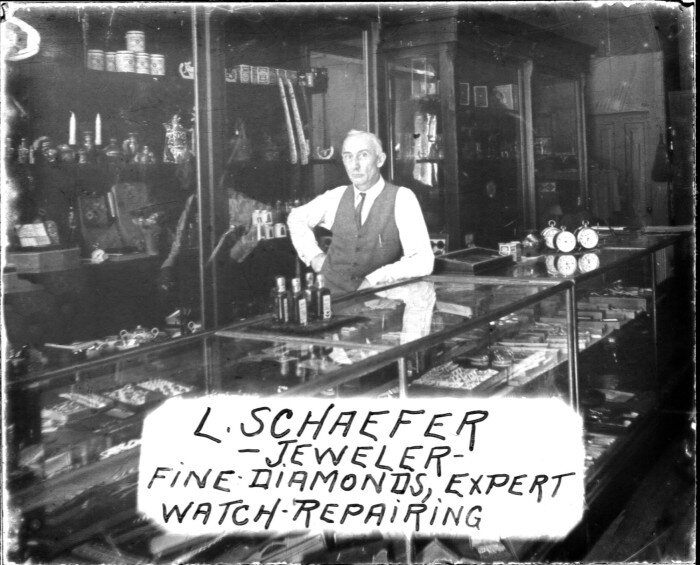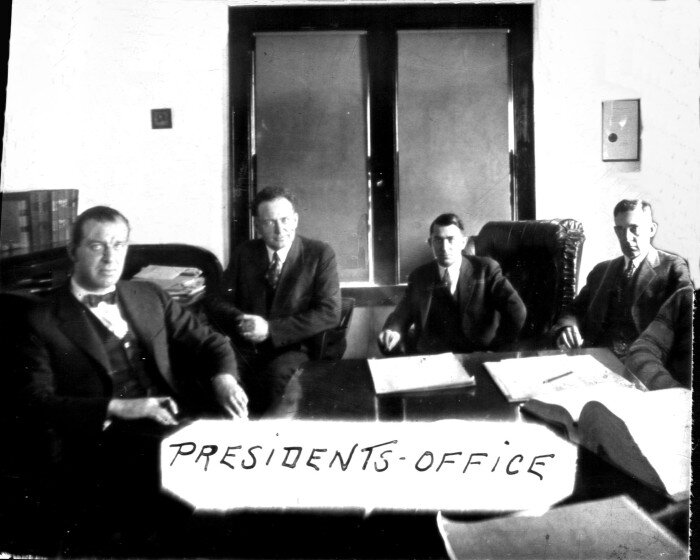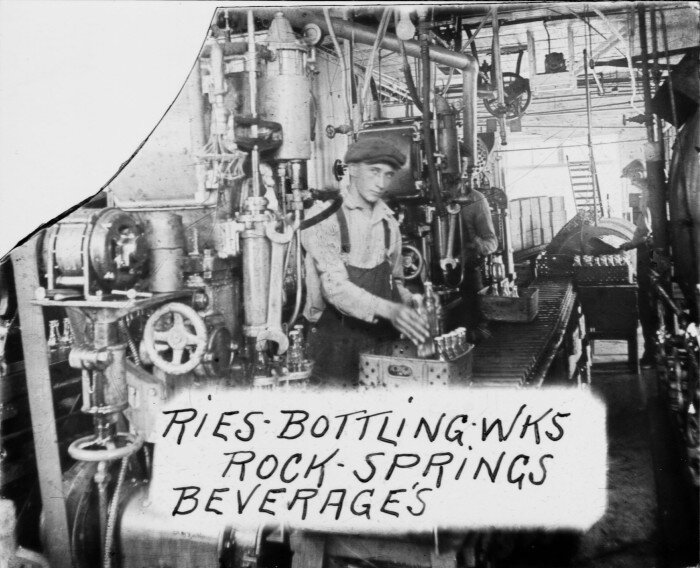Taking the photo:
Once a photographer was satisfied that his subject was sufficiently well lit and positioned*, they would select a plate and follow these steps:
Place a dry plate (contained in a plate holder) into a slot in the camera
Slide the cover from the plate holder to uncover the dry plate
Uncover and then recover the lens. (By 1880, photographic plates were so sensitive that an exposure of less than a second was often enough to capture an image.)
Slide the cover on the plate holder back over the dry plate
Remove the plate holder containing the exposed plate, which was now ready for processing in a dark room.**
* Many times, photographers used frames or braces to hold a subject steady during the exposure time. Any movement could cause the image to blur.
** These plates could produce multiple prints
Developing the photograph:
Moisten the plate in distilled water
Place the plate in a glass or developing dish, and cover with developing fluid
Wash thoroughly when the image appeared
Place in a bath of fixing solution, and then wash and dry the plate. It could be varnished at this point, but this was rare after about 1890.
Printing Process:
Printing Out Paper (POP)
Fairly thin paper treated with photosensitive silver chloride crystals in a gelatin glaze. (used for printing photos that were mounted on strong cards). These prints would usually be toned and fixed.
The POP would be placed under the negative in a special frame then exposed to daylight or artificial light until the image developed
The print would then be washed in water to remove excess chemicals
The print would then be toned using gold and platinum toners (to convert the silver into more stable compounds)
Washed again and fixed using standard fixing solution
The final step was to have the photograph air dried or, squeegeed on a clean polished glass surface and allowed to dry
Platinum Print (Plat), often used for landscape or architectural photos. In this method the metal on the paper was platinum, not silver, and iron salts were used for developing. These prints had a wide range of subtle tones, usually silvery-grey. The price of platinum skyrocketed in 1907 and production of the paper stopped by 1916.
Carbon orienting was another process, which produced a matt finish in colors ranging from rich sepia tones to cooler shades of blue and grey. These types of prints were resistant to fading so were most often used for commercial photos. Other types of prints include Bromide, Bristol, Cabinet, Cameo, Carte de visite, Mezzo, and Vignette
Glass plate negatives are fragile, not only because they are made of glass, but also because the emulsions can easily be scratched or slip from the glass. These negatives should be housed in an archival quality four-flap envelope, which enables the negative to handled without scratching the surface. The envelope should then be stored in an archival box on their edge (straight up & down) and stored with negatives of similar size. Because these plates are heavy, the box shouldn’t be filled tight – a spacer can be put between the negatives to hold them upright and reduce the weight of the box.
Glass plate photographic material largely faded from the consumer market in the early years of the 20th century as more convenient and less fragile films were adopted. However, plates were still being used into the 1970s, most likely because of their great detail and tonal qualities.
Flexible films were available in the late 1880s for amateur use, but the plastic was of poor quality, tended to curl, and initially was more expensive to produce than glass. However, quality improved and manufacturing costs came down and amateurs abandoned plates for film. Now as technology changes yet again, we’ve abandoned film for digital images.



